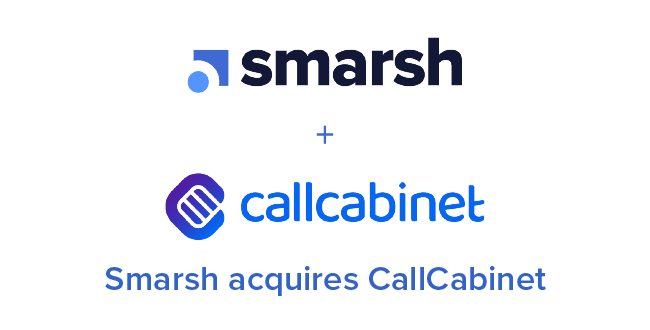From Collaborative to Critical: Slack and Hybrid Work in Financial Services
For many financial services firms, the sudden, and then lasting, move to a digital workplace was a natural progression. Changing demographics had already pushed these organizations to enable a broader set of communications tools — not a shift that regulated businesses can take lightly.
Then there were firms that had to scramble to adjust communication and collaborative processes when face-to-face interaction shut down. For these firms, things like compliance, legal issues, cybersecurity and other potential risk factors may not have been given due consideration.
Across the board, a dependence on technology — to a level that had not existed previously — to get things done was unleashed. Prepared or not, this reliance on conferencing and collaboration platforms for daily, primary communication has caused a major uptick in data generation. All financial services firms should be rethinking their relationship with their organization’s communications data; for employee enablement and risk mitigation, and for the opportunity to understand the data and use it to make informed business decisions.
We recently hosted a virtual event, Smarsh Advance, to discuss these changes and how to succeed in a data-heavy, hybrid working world. Sessions were divided into three tracks:
1. Collaborate
2. Protect
3. Transform
The Collaboration track began with a session on the experiences firms have gained through their use of Slack and other collaborative platforms while working remotely: "Collaborative Tools in the Hybrid Work Reality." The resulting efficiency, productivity gains and agility were compelling.

Where is the return on investment?
Slack’s Lauren Leonard, a senior account executive who works with the company’s compliance and security-oriented customers, noted that financial services firms she has worked with have seen a 50% reduction in emails and internal meetings through their adoption of channel-based collaboration over Slack. She also referenced a consumer lending organization that has managed to shrink the mortgage approval cycle down from one week to 30 minutes.
At a deeper level, Leonard noted the direct correlation between the choice of communications tools and employee satisfaction, as she had seen within company-wide surveys. Employees want to engage on tools that allow them to be productive and successful in their jobs. She highlighted a 24% improvement in employee onboarding time as well as a 25% reduction in time to resolve trouble tickets as examples.
Could this be a solution to the “Great Resignation?” Irwin Lazar, President and Principal Analyst at Metrigy, a leading consulting firm focused on unified communications and collaboration technology, believes it could be. In his view, “the biggest challenge of remote work is keeping people engaged.” Lazar sees the results of the fully remote work era now fueling demand to extend collaborative platforms for external access and the creation of client workspaces.
Blane Warrene, VP of Product Management at Smarsh, agreed, noting that the past 18 months is now in muscle memory, which will help extend access to collaborative features to customers. He sees that firms are “just now getting to the phase of enabling this culturally and socially — not just in terms of the basics of how to get things done.”
The reality of compliance and hybrid work
Moving toward 2022, the panel viewed the flexibility to work from the office, remote, close by (WFCB), or anywhere (WFA) as a prized new commodity, valued by 73% of employees post-pandemic. What now confronts regulated organizations is moving from a mindset of protecting or securing a physical location, device, tool, etc. to securing the individual regardless of where they reside.
Compliance and security controls now need to be equally effective whether an individual is in an office, at home, or on a favorite Maui beach. Collaborative platforms and mobile-first apps will play a large part in addressing that requirement, requiring a deeper analysis of the benefits and risks to the firm from the supported platform.
Lazar noted that this will require significant change management as the speed of technology innovation continues to accelerate. He referenced a recent Metrigy study, which indicated that 20% of firms across industries are turning off specific collaborative features that they aren’t comfortable with.
In financial services, that percentage is likely significantly higher. We frequently hear of legal and compliance teams that painstakingly comb through individual features to determine which can be controlled — either via policy or automated technology control before allowing those features to be used by employees for business purposes. Considering those features now include video, integrated calling apps, recordings, and transcripts, it will only get more challenging to manage.
Compliance and security controls now need to be equally effective whether an individual is in an office, at home, or on a favorite Maui beach.
Identifying location-agnostic controls is quickly becoming a higher priority for more firms, according to Lazar, including advances in zero-trust security, bring-your-own-key (BYOK), and end-to-end encryption leading the way, along with enabling the right mix of applications, cameras, and properly equipped devices.
Slack’s Leonard was a bit more focused in her response to the question of hybrid work, stating that Slack’s goal is simply to make working lives easier. For them, this is a function of getting people off of email and continuing to increase the connective tissue between Slack and other SFDC applications (e.g. Tableau, MuleSoft, etc.) to address problematic workflows and use cases.
Getting through change management
Clearly, change management is not easy, especially when also confronting the realities of on-camera fatigue and the difficulty in compartmentalizing personal versus business head space. Lazar said this is even more complex for regulated organizations that often have policies tied to a previous generation of technology.
While firms would like to establish policies across technologies, the task of discovering and supervising interactive content that can include persistent chats and communications that jump across networks will inevitably cause firms to re-examine whether their currently deployed compliance and data protection controls are suited for purpose.
Warrene echoed this, noting that context is key when it comes to enabling individuals to have a uniform experience across locations, applications and tools — and for compliance teams to build controls that work anywhere. He sees companies working as a triad between themselves, vendors, and content providers to collectively learn how to best manage collaborative platforms.
All panelists agreed on the importance of having executives attached to collaborative technology initiatives, ensuring that business stakeholders along with compliance, legal, infosec and data privacy are also seated at the table to proactively identify and address potential roadblocks before they derail deployment plans.
Working with providers such as Slack and Smarsh as strategic partners can also help in establishing goals and overcoming obstacles that stand in front of ROI targets. Thankfully, Warrene noted that this is one of the most positive changes he has seen since the start of the pandemic, which should help customers and the industry adapt to the next big thing.
Collaborate, protect and transform
Collaboration is just one part of the successful hybrid work equation. There are two other important pillars to fortify in this effort: 1) protecting your organization from enhanced risks due to dispersed networks and lack of in-person supervision and 2) using this moment as an opportunity to transform your company’s relationship with valuable communications data. We’ll cover how to protect and transform in our next two installments.
Share this post!
Smarsh Blog
Our internal subject matter experts and our network of external industry experts are featured with insights into the technology and industry trends that affect your electronic communications compliance initiatives. Sign up to benefit from their deep understanding, tips and best practices regarding how your company can manage compliance risk while unlocking the business value of your communications data.





Subscribe to the Smarsh Blog Digest
Subscribe to receive a monthly digest of articles exploring regulatory updates, news, trends and best practices in electronic communications capture and archiving.
Smarsh handles information you submit to Smarsh in accordance with its Privacy Policy. By clicking "submit", you consent to Smarsh processing your information and storing it in accordance with the Privacy Policy and agree to receive communications from Smarsh and its third-party partners regarding products and services that may be of interest to you. You may withdraw your consent at any time by emailing privacy@smarsh.com.
FOLLOW US